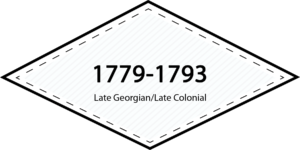
“The Independent Spirit”
World in conflict, with a self-sufficient America


—— THE ERA IN BRIEF ——
It was a time of “settling in” for some, & unrest for others in the world. Women in America were rebuilding a strong country & new roles & relationships. Everyone was watching Marie Antoinette as she bravely led women from men’s dictates of what to wear into simpler & more comfortable fashion that suited a new world order.

—— PORTRAITS FROM THE ERA ——
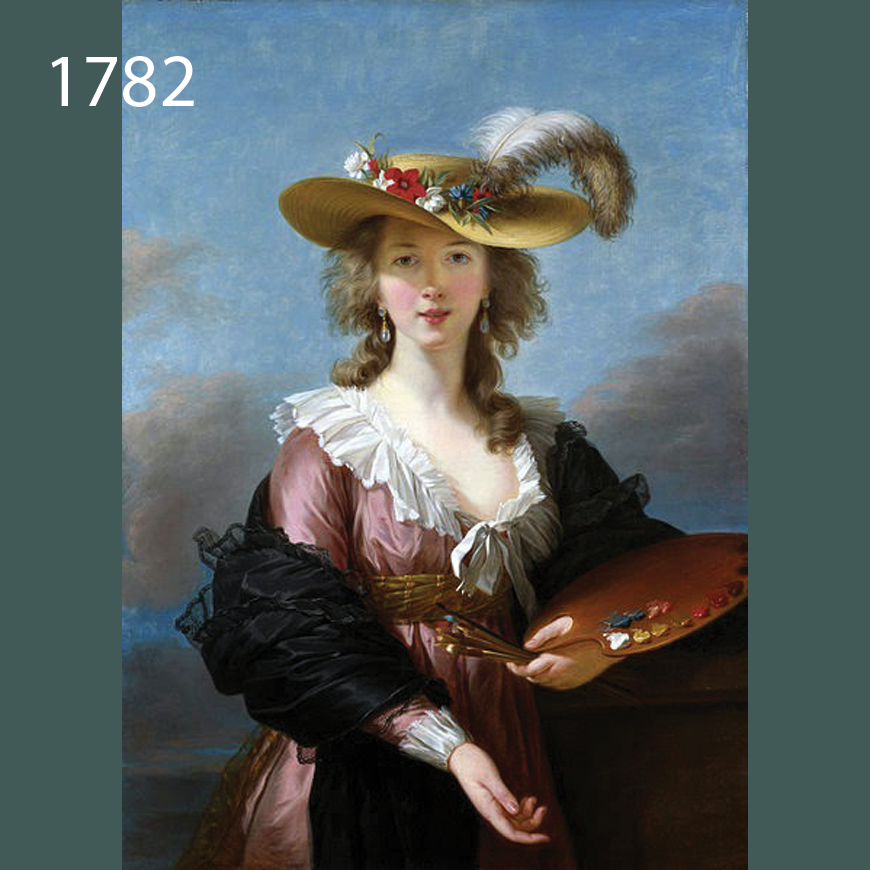
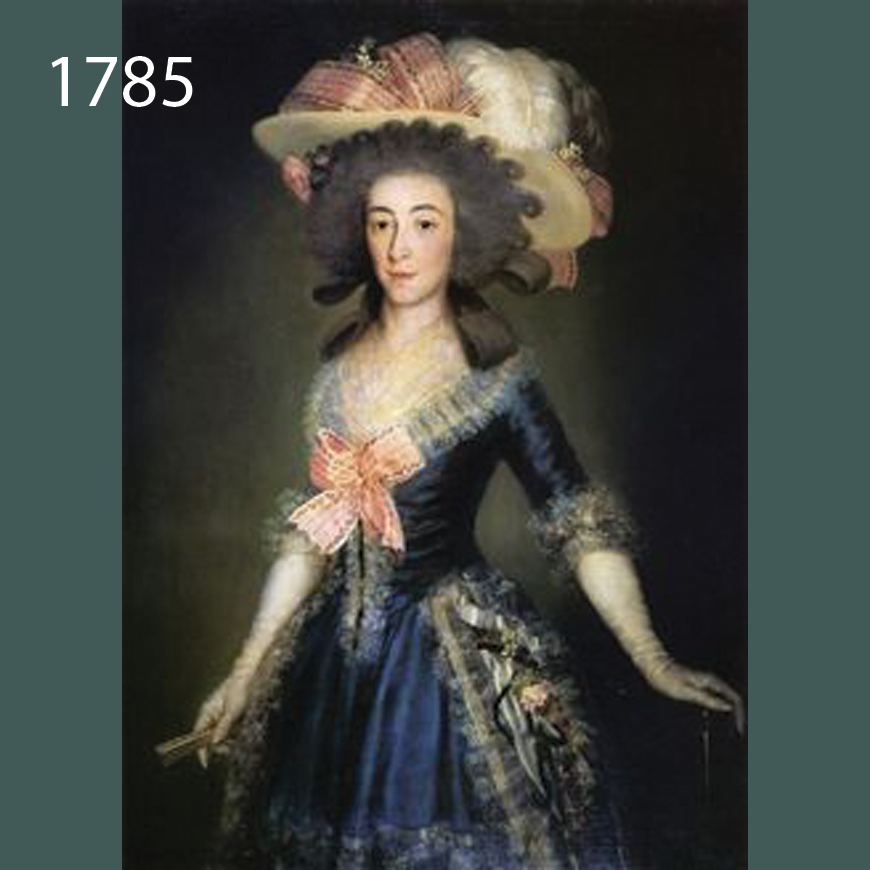
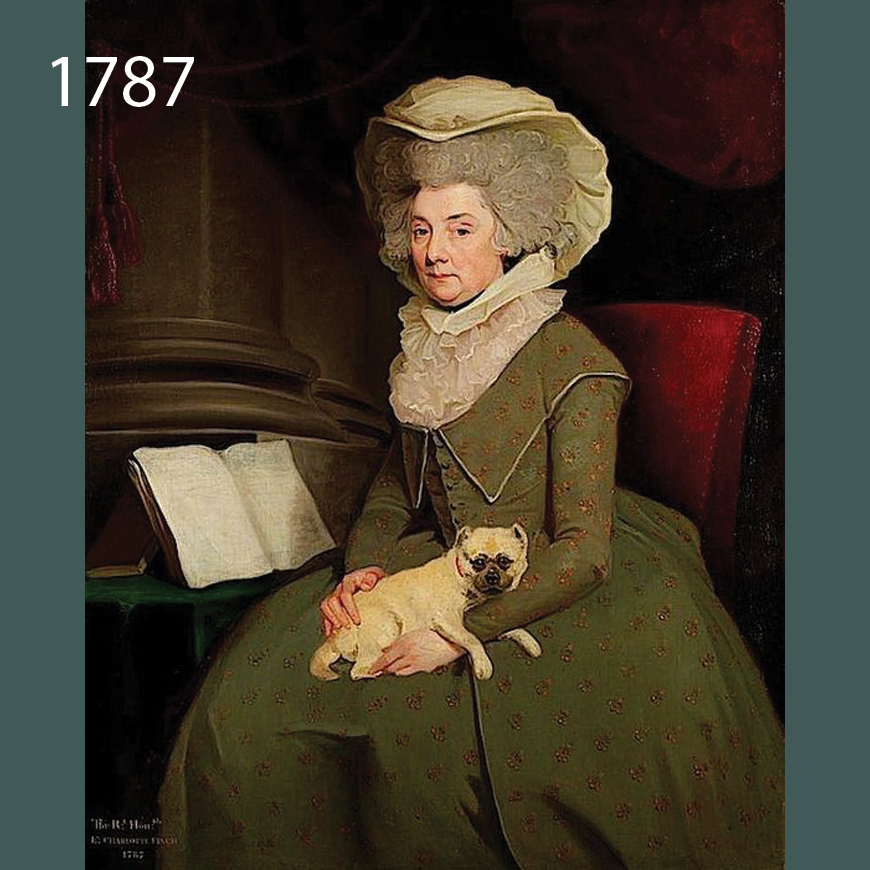
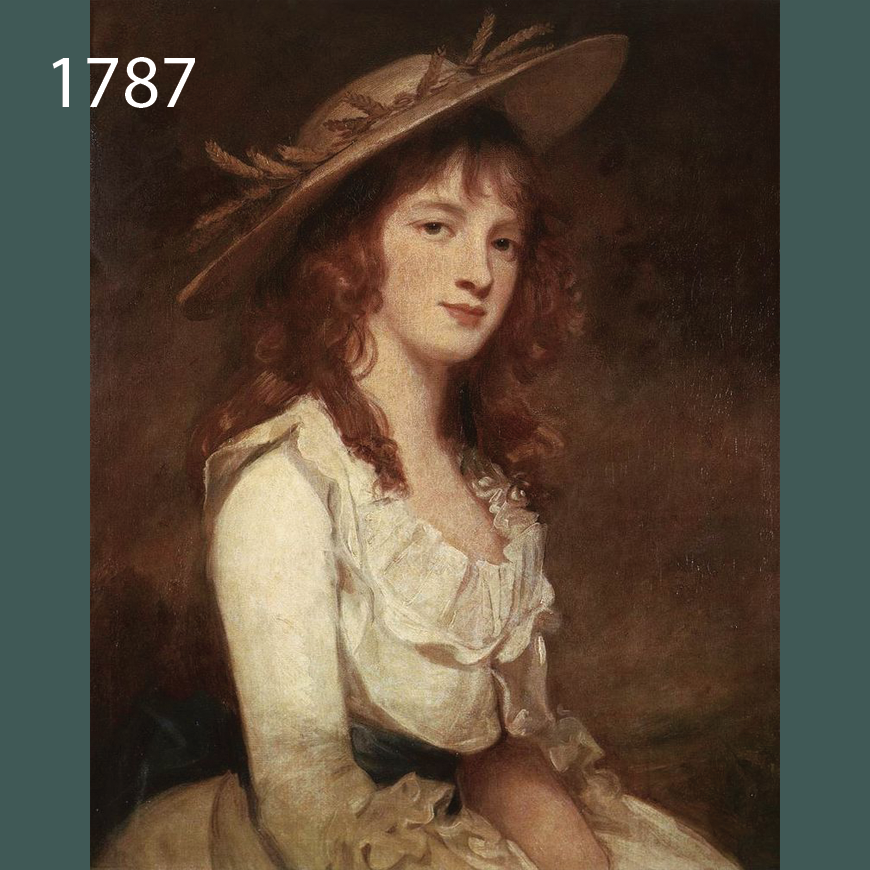
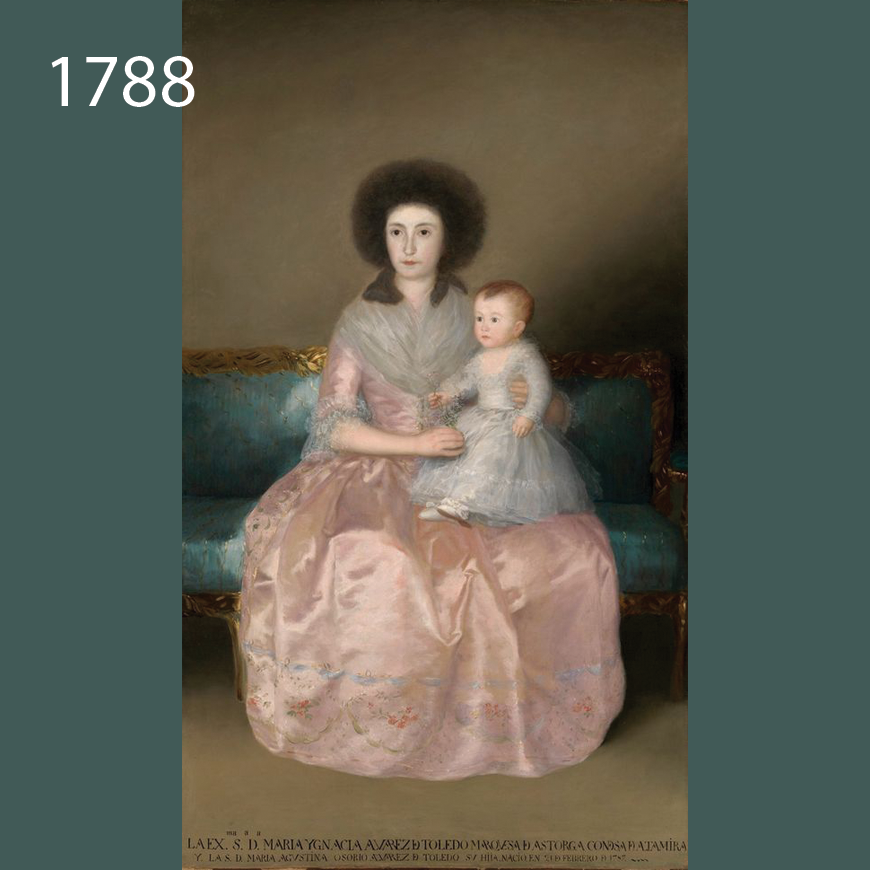
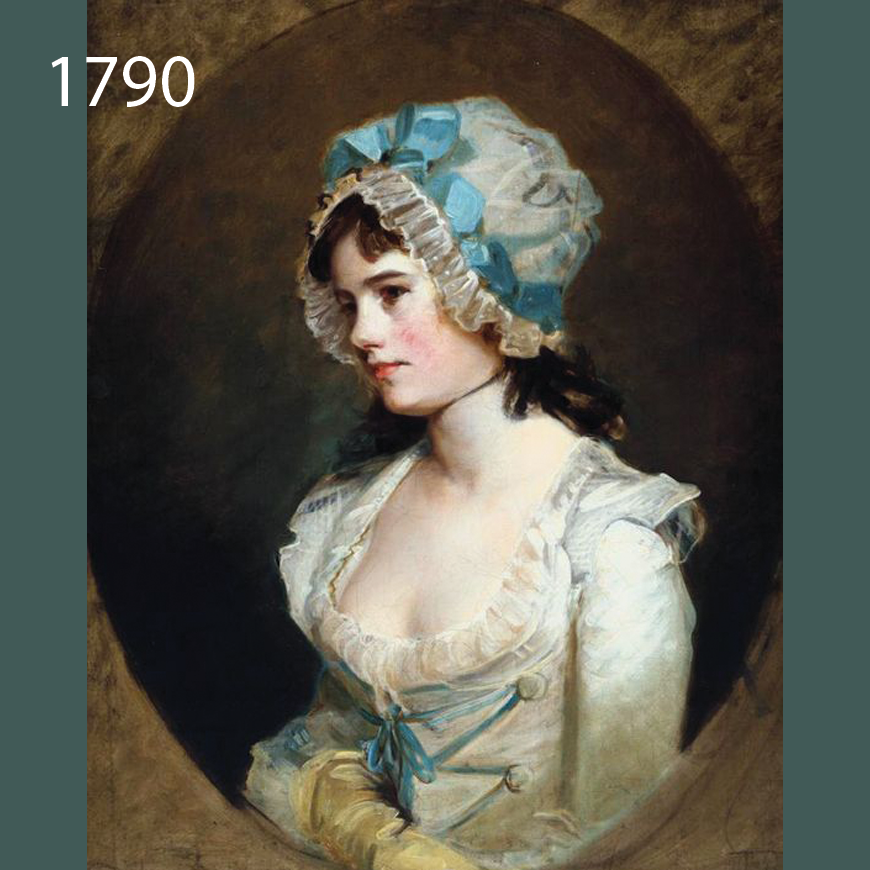
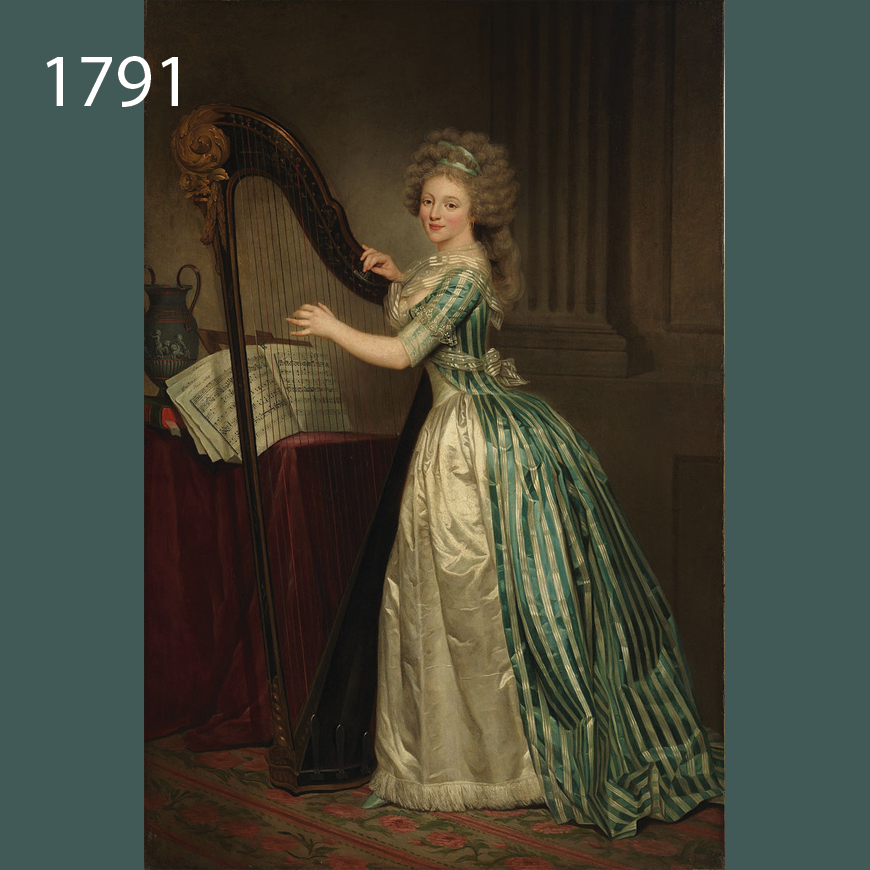
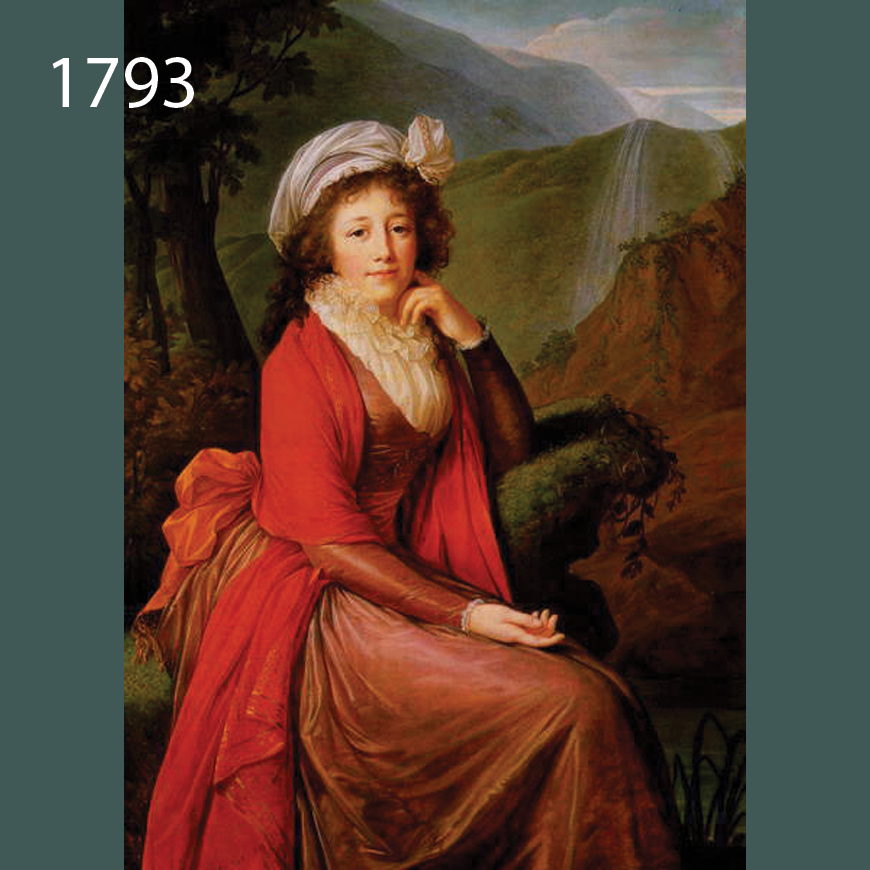
 —— WORLD SITUATION ——
—— WORLD SITUATION ——
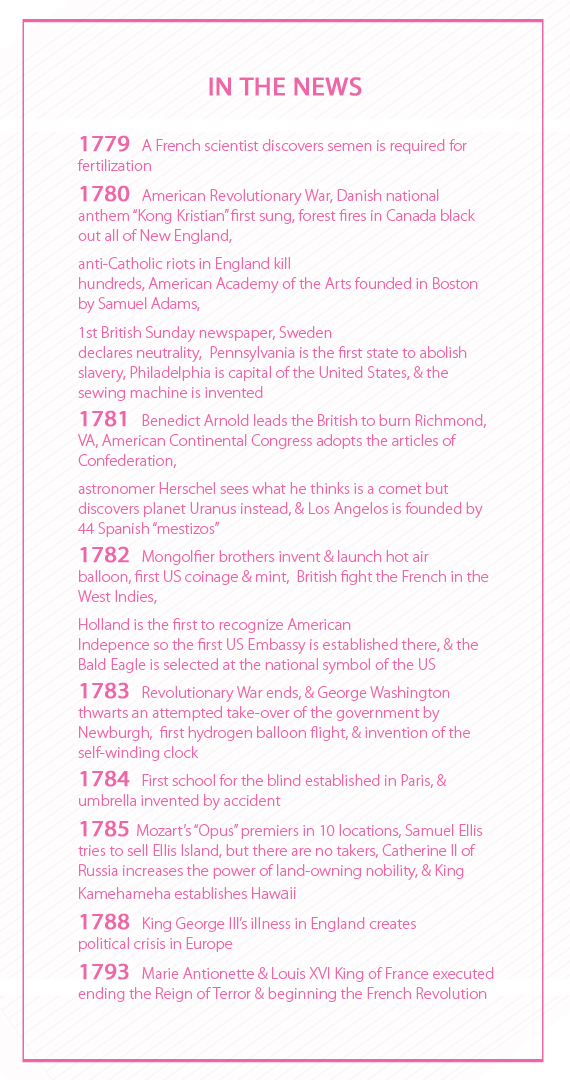
- “New liberalism with human thought” vs. “old order”
- Patriots in the new America & around the world knew the “spirit of independence” would not be won with just a war, but would take forever to achieve. This attitude prevailed in subsequent revolutions
- France was headed to Revolution, & America was ending it* Revulsion of rigid rules & the uprise of Jacobin ideals led to conflict in Europe
- Worldwide concepts of rigidity were giving way as people looked for simpler lives apart from political & court intrigue
- George III’s illness created political crisis in England in 1788
- 1792-1799 was the French Revolution, which started with the Reign of Terror. The Reign ended when King Louis & Marie Antionette were executed in 1793
- The nouveau riche, preceding the breakdown of class, nobility, & the ruling structure, gave rise to the French “Incroyables et Marveilleuses”, “English Macarons”, & “American Dandies”
- These political/fashion movements were made up of 2nd generation bourgeois “protesting” political conflicts in their countries
A NEW UNITED STATES
- They created extremes of style & fashion to mock fashion of the day & to express their own political positions
- American concepts of independence & comfort instead of following rules were embraced in Europe & other countries worldwide
- The Revolutionary War ended in 1783, producing a national consciousness in America
- American people were exhausted & had to rebuild, but they were happy & terrified at the same time
- American cities were affected by war most because rural society was quite self-sufficient since the colonies were first settled
- “Aristocrat” became a bad name in America as it indicated the old order & English connections
- Women had NO independence. A woman of any means or status could own nothing
- A woman was required to be faithful without fault
- Women’s independence was, however, taking root as women ran mills, farms, plantations, & many businesses in additiona to running their households when their men went away
- Many women worked in secret under fake names pretending to be men
- Women had been instrumental in the war effort. George Washington had a woman spy
- Economic woes due to political strife, caused laws regarding export & import
- There came the desire to “have less” & to simplify in America
- Even with their hardships, Americans as a whole still had a higher standard of living than anywhere else in the world including Europe
- America was forced to provide for themselves & create new relationships with former enemies & friends as a new sovereign nation
- Working independently & from within, the new United States became more stabile & self-sufficient
- The self-reliance & confidence of Americans caused them to become innovators
- Americans were their own best consumers because they did not want to depend on import from other countries
- Science & innovation were on the rise around the world, especially in America with the washing machine & steam power
- Concepts of “self-hood” resulted in a consumer revolution of sorts in England too (that ended the guilds)

—— FACTS OF THE TIME ——
- Cotton was easily available from the Indies, India, & the Americas
- Printed cotton from India became wildly popular
- More elegant fabrics became easily available as the era progressed
- Wearing red became a symbol of liberty in France
- Medicine, sanitation, health, longevity, & infant mortality were greatly improving worldwide
- Paving, lighting, indoor plumbing, clean water supplies, drainage, & emptying slums improved cities
- People were washing themselves & their garments regularly for the first time in history
- England particularly took pride in urban cleansiness
- Replacing linsey woolsey petticoats & horsehair pads, along with having light cotton garments, made for easier cleaning of garments & better sanitation
- In American areas west of the major populations of the East Coast, people were self-sufficient. They grew, hunted, fished their own food
- America’s “functional backwoods” fashions became extremely fashionable & popular in Europe & in the eastern United States
- Rural Americans made their own fabrics from flax, linen, & wool, & dyed them from natural sources
- Brown, orange, red, & pink were prevalent colors used for fabric, as they came from naturally sourced dyes
- Green was the most common & available color of dye, & it was available to people of all walks of life
- Rich purple & blue dyes were hard to get everywhere in the world, & especially the US, so those were the colors of royalty & the affluent, although some blues & blue-greens were available to the general populace
- Almost all children in America went to school at this time, & some boys went to college as early as age 12 to schools such as William & Mary on the East Coast
- A trend towards living in the city began due to work in factories for the common people
- Nobility, however, sought a simpler life & moved out to the country
- If Nobility could not move to the country, they emulated country life in the city
- The first sewing machine was invented in 1790, although it did not work very well for everyday use
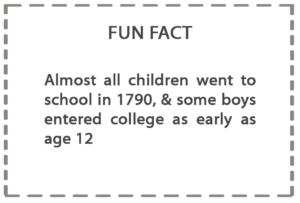

—— FASHION TRENDS ——
BUM & BUST
- The goal of having a simpler life made a somewhat austere silhouette compared to previous era
- There was little decoration or ornament on the main garment, so women added scarves, fichus, large hats, aprons, & bibs to express individuality & to create interest
- Large derrieres & breasts were the goal, & padding was specific & huge for this
- “Rolls & false bums” replaced panniers & hoops quickly at the beginning of the era
- “False bums”, “rumps”, and “corks” padded the back now; not sides as in previous eras
- While panniers & farthingales continued to be worn for specific activities or functions, most women did not wear them now
- French court fashion continued wearing panniers & hoops plus the extreme ornamentation & structure they were the last to abandon them in about 1790
- Some of the finest huge pannier museum pieces come from this era, as they were using new fabrics & ornamentation previously not available
- Breasts went up; necklines went down
- Breasts were pushed up & out; described at the time as “putting apples on a tray”
- “Naturalism” after 1780 idealized the Rousseauesque sexual character with emphasis on the butt, breast, & cascading hair
- Clothes became simpler, yet were still based on the same sacque & mantua gowns of previous eras
- At the beginning of the era, class distinction was made using fashion
- What people wore, & how they wore it separated nobility from others, urban from rural, & upper from lower classes
- It was still the same basic “sacque” every woman wore, however. A servant’s costume might be just a plainer, simpler version of the own with apron, cap, or fuchu added
GAULLE ET CHEMISE (“Gaulle” & “Underwear”)
- Marie Antoinette, Queen of France married to Louis XVI, up until 1780, was forced to wear extreme corsets, structures, & hair not only in Court, but all the time
- Marie hated the restrictions, & rebelled by retreating to her “Petite Hameau” farm outside of Paris
- In 1780-5, she escaped to the country where she introduced “Gaulle” & “Chemise a la Reign” fashion concepts
- “Gaulle” was a loose version of casual court dress, made of simple plain & unadorned fabrics such as cotton
- It was typically white, loose fitting & ‘blousy’; tied at the waist by a belt or sash
- A “Gaulle” gown might have ruffles or lace in simple adornment
- Sleeves became unadorned. Before that it was common to have 2-3 ruffles on each gown sleeves
- “Chemise a la reign” was a simple white garment much like underwear of the era
- Famous female painter of the time, LeBrun, depicted Marie in an official portrait wearing “Chemise a la Reign”. It caused a major scandal, & LeBrun was required to repaint it to show Marie wearing a different outfit with more fabric & decoration
- Le Brun’s portrait was scandalous not because of a woman being shown wearing a thin or bare garment, but because she did not show the proper respect for her high station as royalty
- Ironically, Marie Antoinette would be executed for having an excessive lifestyle with too much flamboyance
- There is some historical confusion about the terms & definitions, but “Gaulle” & “Chemise a la Reign” meant Marie escaped Court structure & constriction to wear comfortable, soft, loose fitting & cool pajama-like clothing around the house
- The “little white dresses”, despised yet copied by both nobile & common women, would be the basis for the next era of fashion
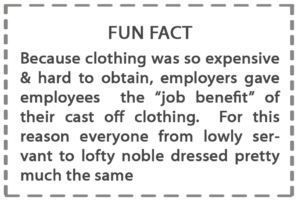
SHEPHERDESSES IN THE CITY
- There was an “in between” Court structure & the “Gaulle” style concept that Marie introduced
- Marie had observed the simple clothing of the rural peasantry as she stayed at her “Petite Hameau” (little farm)
- The peasant costume was a basic fitted bodice with simple, somewhat full skirt
- Peasants wore a drapey overskirt which was used like an apron to dry their hands or protect them when they sat down
- The overskirt petticoat would be washed often, protecting the main skirt & bodice from wear
- The peasants would pull up their overskirts & tuck them into their pockets to keep them out of muck
- Marie’s version was basically the same, but much fancier
- The “dressed up” peasant dress had an embroidered underskirt & multiple petticoats for more fullness
- Marie’s overskirt was drawn up by tapes & cords like curtains to get the large ‘pouf’ effect, although some women still tucked them in pockets
- The effect of the new draped overskirt was the same as if they had used a small pannier, but the effect was made by the draping instead of a rigid understructure
- The new “peasant” or “shepherdess” bodice was made of lovely fabrics in a perfect, tight fit
- The bodice & stays were designed to push the “apples” up to the fashionable height of the day
- The skirt & petticoat of Marie’s ensemble were very short for the time & revealed the ankle
- Marie Antionette was highly criticized for breaking social rules by showing her bare leg & foot
- The critical women from all walks of life, however, copied all 3 styles, including baring their legs
- The tall powdered hair & ornamentation of Court graced Marie’s “shepherdess” look, along with the bows, frills, lace, contrasting fabrics of Court dress
- Urban “shepherdess'” gowns were made of the finest French fabrics & notions
- By the time nobility was done with it, the costume looked little like the peasants wore
- Parisienne women imitating the style became real “shepherdesses” who brought real sheep into the cities to complete their look. They carried shepherd’s crooks & wore elaborate hairstyles. They never actually did anything with the animals, but just stood among them
- Real peasant girls wore Marie’s modified “peasant” look too, but with less ornament & lesser quality fabrics & trims. Peasant girls actually herded real sheep, so continued to use their drapes as aprons & crooks for the intended purpose
- French, English, & American fashion evolved the “shepherdess” look into their own versions by combining the concepts of rural America, pastoral England, & the French “gaulle”
CHANGE OF A DRESS
- Marie Antoinette was guillotined in 1793, accused of overspending on clothing & lifestyle
- She & Louis were killed in the “Reign of Terror” which preceded the French Revolution which would replace the French monarchy with the Napoleon Empire
- Legend has it Marie wore soft flat purple slippers & her simple white cotton “Chemise a la Reign” to the scaffold, where she apologized for stepping on the executioner’s foot
- Courtly manners were being discarded
- Upper class & bourgeois people affected uncouth & gruff behavior to prove they were a part of the Jacobite (uprising) or to hide their identity or allegiance during dangerous times
- The next fashion era, Regency, actually started in many factions 1793 with introduction of “Gaulle” & “Chemise”, but was not the main trend until 1795 & later

—— FASHION SPECIFICS ——
GOWNS
- The basic “uniform” for all women of the era was a fitted or loose bodice, full skirt sometimes open & sometimes closed, showing a decorative petticoat, which had not yet become an undergarment
- A gown was called a “robe” at this time. There were many different types of “robes”, but all were based on the same concept; refined from the previous era
- This basic outfit was enhanced or simplified to suit the specific need
- By 1789 all skirts narrowed, & became more tailored per “l’anglaise” style
- 1792 saw the most popular use of the “Open Robe” with skirt back slightly padded using a rump
- The visual effect of the new stays, robe design, with padded rumps, gave the appearance by the end of the era of a “Pouter Pigeon”
- This “Pouter” silhouette would reemerge in the late 1890’s as the “monobosum” using a corset that trained the body into shape rather than just creating a visual effect
MANTUA
- The mantua was still worn by all classes to all occasions. It was still usually a one piece gown, simpler, looser, & more casual than anything other garment
SACK
- The “sack” (“sacque”) as modified to “l’anglaise” & “la francaise”, were still the basis of fashion, but focus on understructures became less important
- The “sacque” was pulled up
POLONNAISE
- The “polonnaise” still popular, but the hem dropped to ground from its previous above-ankle location in the early part of the era, except in its application of the “shepherdess” look, when it raised to above ankle length briefly
- “Polonnaise” had its last crazy heyday & got really big, voluminous, & ornamented right before it was dropped from fashion altogether (until the 1860’s when Haute Couture Worth claimed he invented it)
ROBE A LA TURQUE
- “Robe a la turque” was a new variation of the robe introduced at this time, although it dragged on the ground so did not gain huge popularity except for evening wear
ROBE A LA CREOLE
- “Robe a la creole” was introduced by a French woman coming from the West Indies
ROUND ROBE
- The “Round Robe” was a combination of “chemise de la reine” and “robe a l’Anglaise”. Sometimes cut without a waist seam, but usually bodice & skirt were cut separately & then joined at the waist
- The back of the “Round Robe” at first had the numerous seams of “en fourreau”, but most were eliminated, except those to the back & back side seams
- The bodice of the “Round Robe” had many variations. It could be gathered at neck & waist, fitted & worn with a fichu, or have a fichu incorporated for a “V” crossover front
- The skirt of the “Round Robe” was cut from several widths of material, usually unshaped, & fullness gathered in front with back arranged in box pleats over a pad
- The “Round Robe’s” sleeves varied in length between short, to the elbow, or to wrists
LATER – OPEN GOWN/LEVITE
- The “Open Gown” was worn with a closed robe or petticoat, & was derived from the “Robe a l’Anglaise”. The cut was the same as that of the closed robe.
- The difference between the Open Gown & predecessors was that it always had a waist seam. The front bodice had the same variations of style as the Round Robe, but was always much more fitted.
- The “Open Gown” or “Levite” (a slightly modified version from the basic) had a train at the back, with skirts open in front. Sometimes the skirts met, or crossed over, or were set far to the sides of the bodice
- Sleeves of the “Open Gown” were usually long & fitting
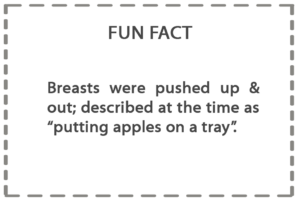
UNDERGARMENTS
STAYS
- Stays became more important than stomachers
- Stomachers disappeared by 1790
- Dress parts, such as the front closing bodice, were pinned into the stays for closure
- They did not attempt to control the body, but to make a certain shape
- The amount of compression was more like wearing a contemporary back support wrap for sports
- Stays were unseen under the dress
- Commonly made of linen lined with cotton muslin for everyday use & the lower classes, many were highly ornamented of silk brocades with embroidery & trim
- Typical colors for lower classes were brown, pink or green with white lining. Upper classes might have pink, blue, green, or even bright red
- Stays were intent on achieving the straight conical silhouette that pushed the breasts up & out, & were quite rigid
- There were fully boned & half boned styles depending on the body of the wearer’s need for support
- Bones were of whale baleen or reed, & heavily boned at seams
- Early in the era, stays were made of 4 pieces that were boned & then whip stitched together. These can be recognized by a decorative tape or leather stitched over the seam
- Later stays were of 6 parts, & pieced before boning
- Early stays laced only in the back, but as the era progressed, front and/or back laces were common & just a matter of preference by the wearer
PETTICOATS
- Most stays of the era included tabs at the bottom for pinning or tieing petticoats & pockets on
- Stays manufacture & fitting were strictly the profession of men at this time, although women dressmakers made petticoats & the lighter fabric undergarments
- A woman of status would wear as many cotton petticoats as she could
- Since no underwear nor pantaloons were worn at this time, an inner petticoat was commonly worn
- The inner petticoat might be quilted, or of a flannel or wool fabric
- The term “petticoat” meant the actual “robe” or outer garment that could be seen
- Underlying petticoats then meant those of plain or embellished cotton muslins that would not be seen
- The number & type of these varied greatly according to occupation. Most typically petticoats were made of a straight tube of fabric, pulled together by a cord at the top, & having at least one self-fabric ruffle on the bottom to help hold the skirt out
- Many poor women did not wear under petticoats at all which has interesting legends about young rural girls “hiking up their skirts to show their sunbrowned hips” while dancing
JACKETS
- The redingote, a French type of sacque made in silk, was cut more like l’anglaise robe. It became the standard of country wear at first for casual wear indoors, & later everywhere outdoors
- The late 1780’s were especially known for introduction of the “Caraco” & short jackets which were ruffled, fit smoothly at the waist, & then belled out over the back of the robe/gown
- Sleeves of both gowns & jackets were more fitted, broader, & tailored than before. They were not as ornamented & gradually narrowed from 1775 to 1790
- When the day dresses lost their trains nearing 1800, the “Pelisse” coat began to be worn
- A “Pelisse” was cut like the Round Robe, sometimes in cotton, but usually in warm materials that could be lined with fur
- The “Pelisse” in various forms & versions would persist for many decades as preferred outwear
FABRICS, NOTIONS, & TRIMS
- 1778 added frills on the bodice, sleeves, & along the front of the open robe
- Box pleats were used liberally early in the era
- Later, little to no frills were added in favor of the dress itself
- Towards 1790, only a few ruffles were used on the neck & sleeves
- Fabrics were all of “natural” sourcing: linen, flax, cotton, wool, silk being common & available locally or through easy import
- Chintz, crepe, brocade, silk were used more than the cotton after 1778, as the West Indies opened to fabric & raw material trade, & manufacturing processes evolved
- Towards 1800, cotton would become the favorite
ACCESSORIES & HAIR
- The huge Court hairdos of Marie Antionette, the “shepherdesses”, & nobility, had their last fling early in the era, then died quickly
- These were tall confections of powder or pomeade, & were often wigs or included false hair
- Hair by 1790 was left natural by all but the highest elite
- Hair was left natural & hidden in a cap, although one dramatic long curl might fall along the breast
- Some women used pads to raise the top of the hair a few inches, but this was more to keep the cap on the head than it was for fashion
- HUGE white cotton “mob caps” became popular by 1786 because despite more sanitation & garment laundering, women did not wash their hair very often
- Caps were very popular in America & Europe because those countries were cold & windy
- All classes wore caps; maids wore simple black taffeta hats, while masters wore fine linen with decoration
- The unadorned wrist became more important as time went on
- The umbrella was accidentally invented, & embraced at this time
- Shoes were covered with fabric that matched the robe/gown
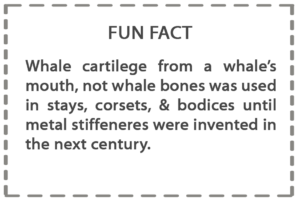
 —— EXTANT (ACTUAL) GARMENTS ——
—— EXTANT (ACTUAL) GARMENTS ——
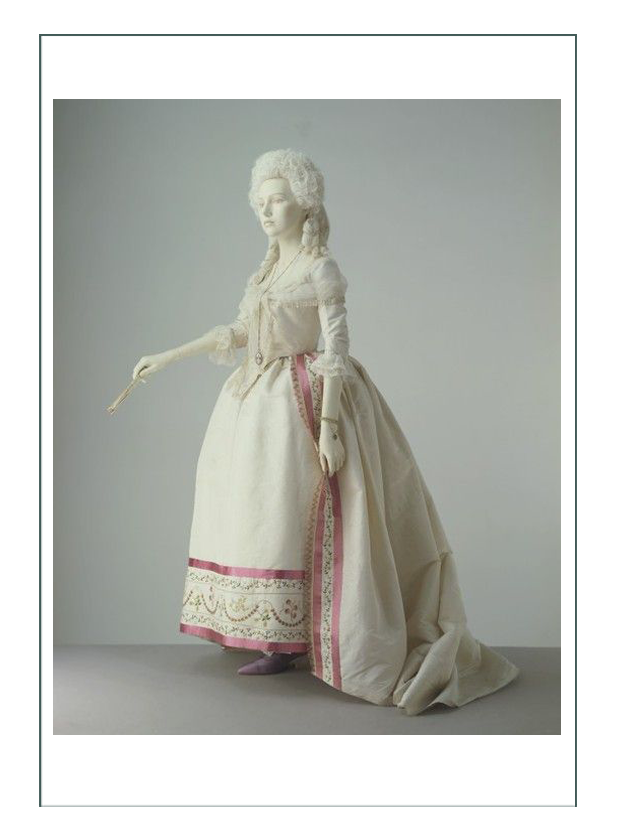
—— (above) “Levite 1780” ——
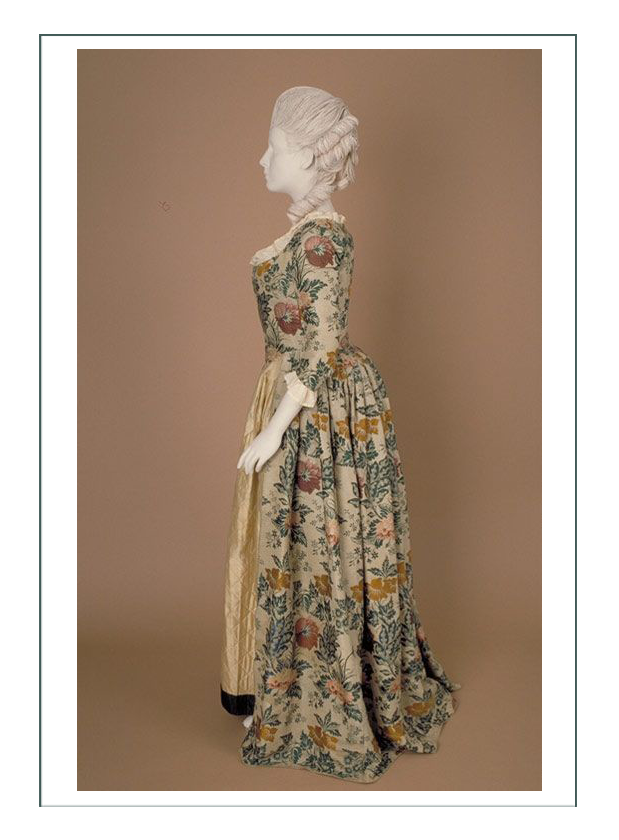
—— (above) “Round Robe 1780” ——
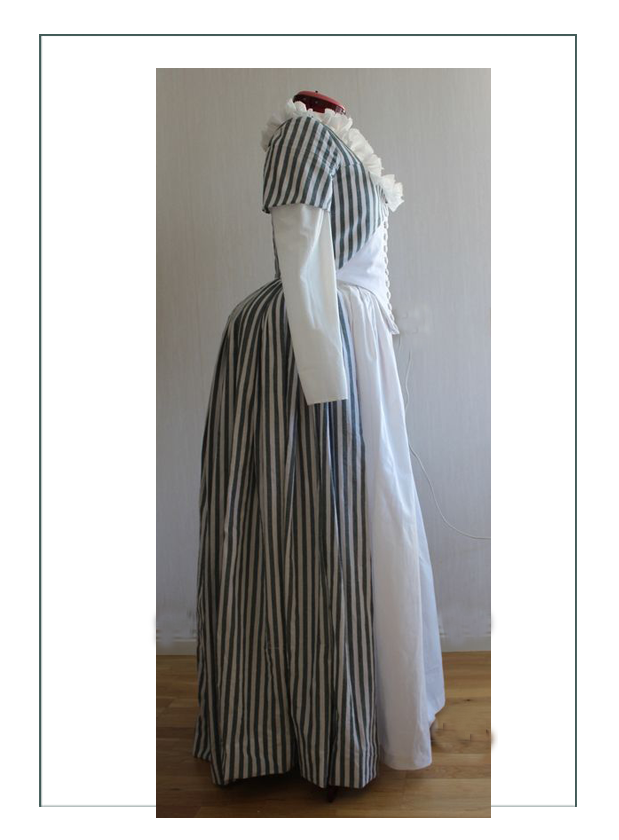
—— (above) “Robe a la turque 1782” ——
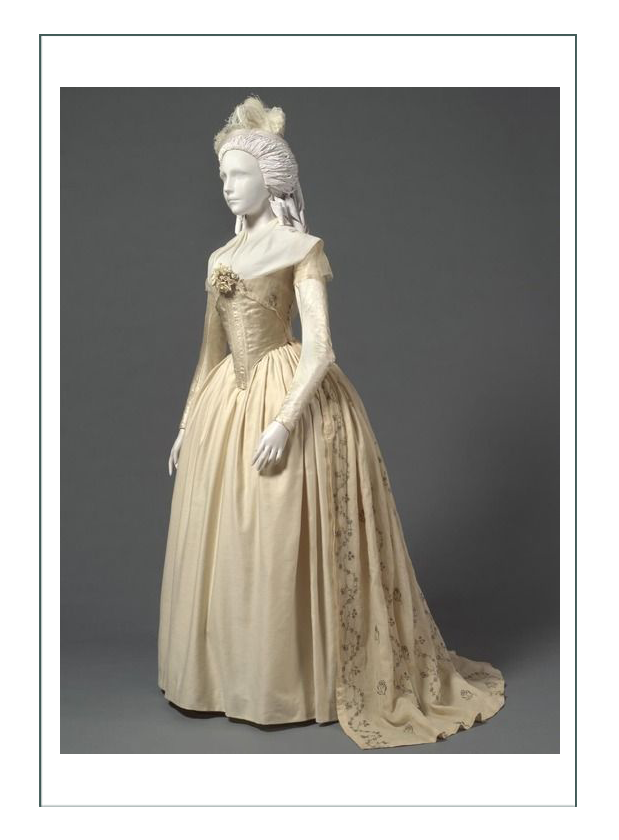
—— (above) “Robe a l’anglaise 1785” ——
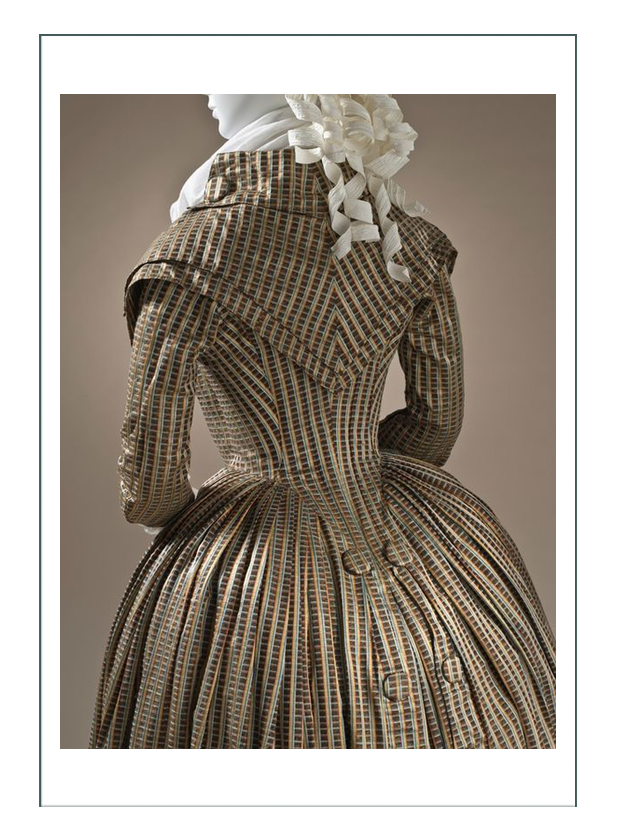
—— (above) “Robe a la royaliste 1790” ——
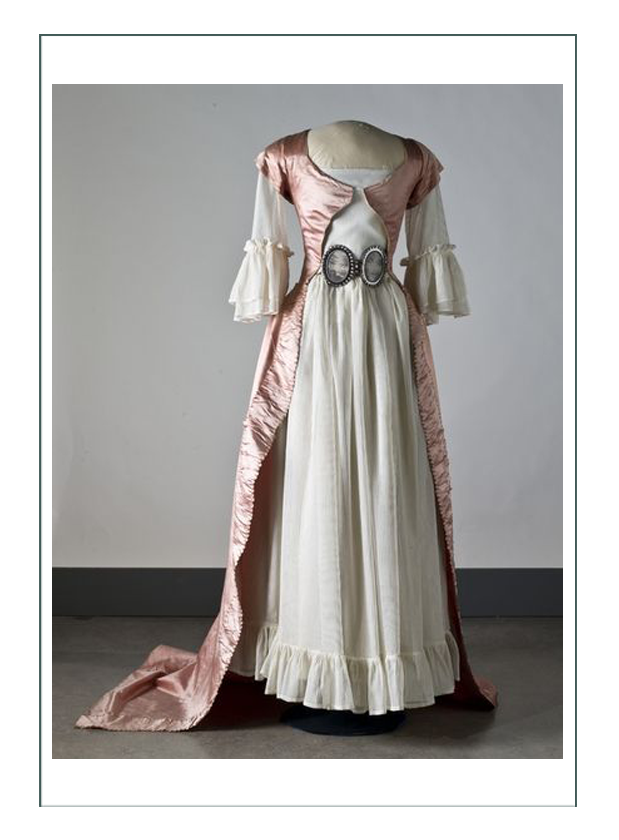
—— (above) “Chemise a la reign 1791” ——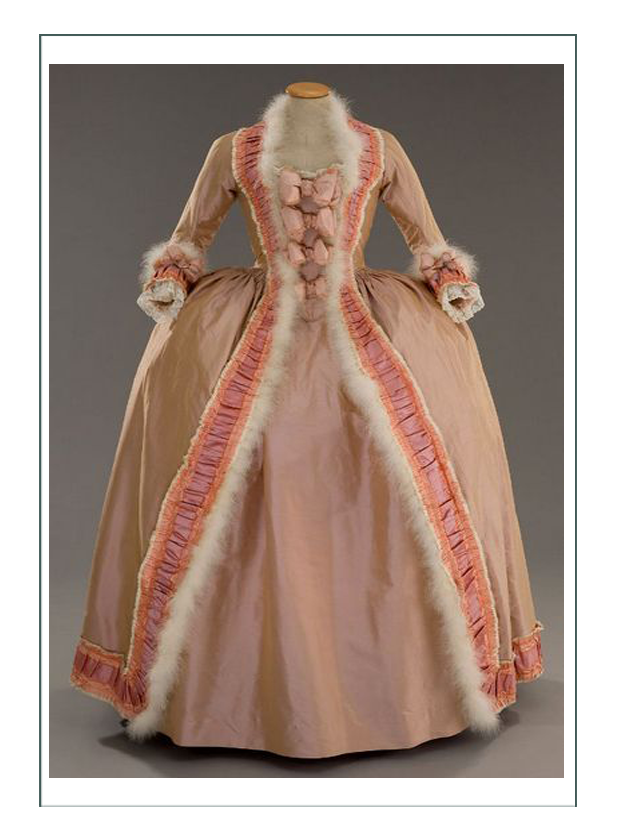 —— (above) “Gown worn by Princess de Coppela 1792” ——
—— (above) “Gown worn by Princess de Coppela 1792” ——
Click date below to go to a different era. We can replicate most ANY garment you see!
